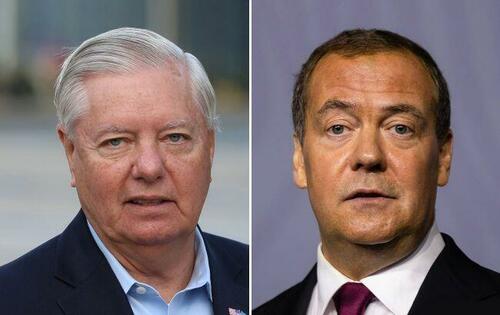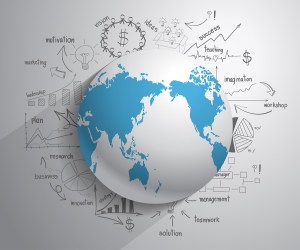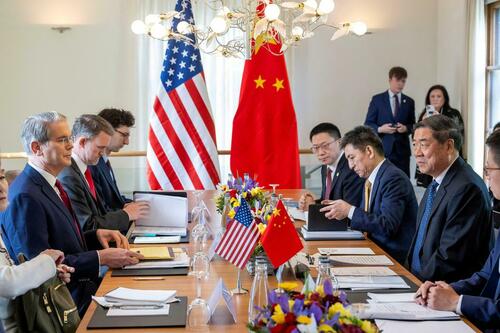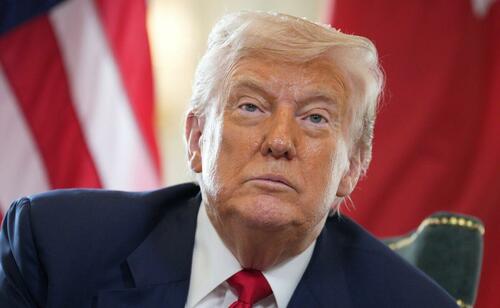How Trump Just Turned Europe Into A Vassal Market
Submitted by Thomas Kolbe
On Sunday, the United States and the European Union agreed on a new framework for transatlantic trade. The outcome exposes Europe’s open flank – its dependency on foreign energy.
It was a home game for U.S. President Donald Trump, albeit on foreign soil, as he and European Commission President Ursula von der Leyen stepped in front of the cameras at Trump’s golf resort in Turnberry, Scotland. In a visibly upbeat mood, Trump announced what he called “the greatest trade deal ever” between the U.S. and the European Union.
America Reshapes Global Trade
The framework agreement—still pending ratification by EU member states and the European Parliament—imposes a 15% tariff on most EU exports to the United States. That’s half the originally threatened 30%, but still far above historic norms.
In return, the EU commits to energy imports worth $750 billion over the next three years—including liquefied natural gas (LNG) and petroleum products. And then there’s the MAGA component: investment in the American heartland. A whopping $600 billion is to be mobilized from European industries and invested in the United States, with a strong focus on defense manufacturing. The message from Trump is clear: if Europe wants to keep fighting its proxy war in Ukraine, it will now have to pay for American weapons. Nothing comes free—not even Europe’s newly rediscovered belligerence, which the U.S. appears increasingly reluctant to subsidize.
For selected strategic goods—aircraft components, key chemicals, semiconductor equipment, and generic pharmaceuticals—a “zero-for-zero” rule will apply.
Europe Without Leverage
This clause rounds out the package, which von der Leyen, visibly exhausted, praised as delivering “security and predictability” for both sides. Not exactly false—but the deal starkly reveals the EU’s geopolitical decline. Europe has now been forced into the energy orbit of the United States. In the end, Brussels looks like a student dutifully copying the dictation of its transatlantic teacher.
The EU is not the first to swallow Washington’s bitter pill. Recent deals with Japan and the UK suggest the new normal for tariffs is somewhere between 15% and 25%. The price of accessing the world’s largest consumer market has now been made explicit.
A Great Deal—for America
From a U.S. perspective, this is a great deal. Hundreds of billions in capital will flow from Europe to America. Some of it will help Europe paper over its self-inflicted wounds—its energy crisis being one, after cutting ties with Russian gas and shutting down German nuclear power.
Trump has secured two outcomes. First, U.S. tariff revenues will continue to rise. Second, the president has scored another PR win for American industry—following up on his Middle East tour a month ago, where he clinched multi-trillion-dollar investment commitments for U.S.-based projects.
EU-Europe Stays the Course Toward the Wall
Trump is doing what any rational realpolitik leader should do—pursuing national interest through trade leverage. His foreign policy is essentially trade policy. His domestic economy is made more competitive through deregulation, tax incentives, and aggressive promotion abroad. That, dear Chancellor Friedrich Merz, is what’s called location competition—a challenge Germany and the EU might embrace rather than resist. It could be a moment to reconsider failed policies and return to economic reason.
But that didn’t happen. During negotiations, the EU’s entrenched interests won out—at the expense of ordinary citizens. Brussels could have used the talks to scrap entire catalogs of non-tariff trade barriers. Instead, nothing was touched. Climate regulations, the Digital Services Act, harmonization rules that deter foreign investment—all remain intact.
The EU’s hidden protectionism, the true power base of Brussels’ corporatist ambitions, remains untouched.
Short-Term Relief, Long-Term Price
For Germany, the deal offers some short-term relief—especially for carmakers, chemical producers, and machine builders. Strategic industries benefit from zero tariffs on high-tech goods like aircraft parts and specialty chemicals. That helped avoid a trade escalation that would have devastated Germany’s export-heavy economy. Chancellor Merz called it a “desperately needed signal of economic pragmatism.”
But this partial reprieve comes at a price. The punitive 50% tariffs on steel and aluminum remain—a crushing burden for German basic industries. This deal is no fair trade; it’s an asymmetric arrangement in which Washington selectively relieves and structurally dominates.
Lessons from the Deal
What’s being sold as a “trade deal” is, in truth, a geopolitical alignment. EU-Europe has maneuvered itself into a dead-end by burning its last diplomatic bridges with Moscow. Now, with 60% of its energy needs dependent on imports, Brussels finds itself tethered to U.S. energy dominance. And Trump has no intention of letting Europe’s green welfare utopia flourish at America’s expense. Energy comes at a cost—and Brussels is beginning to grasp the real price tag of its green transformation experiment.
That green experiment, like Europe’s resurgent militarism, will weigh heavily on public finances. It’s now up to the voters to push for a course correction—or sink ever deeper into the pit they’ve dug themselves.
The deal also has major implications for monetary policy. It forces the EU deeper into the energy-mercantilist world of the U.S., reinforcing the petrodollar system. The investment shift toward U.S. soil will help shore up the dollar’s role as king of fiat currencies. The dollar remains the unit of account. The euro wasn’t even mentioned.
* * *
About the author: Thomas Kolbe, a German graduate economist, has worked for over 25 years as a journalist and media producer for clients from various industries and business associations. As a publicist, he focuses on economic processes and observes geopolitical events from the perspective of the capital markets. His publications follow a philosophy that focuses on the individual and their right to self-determination.
Tyler Durden
Tue, 07/29/2025 – 02:00












